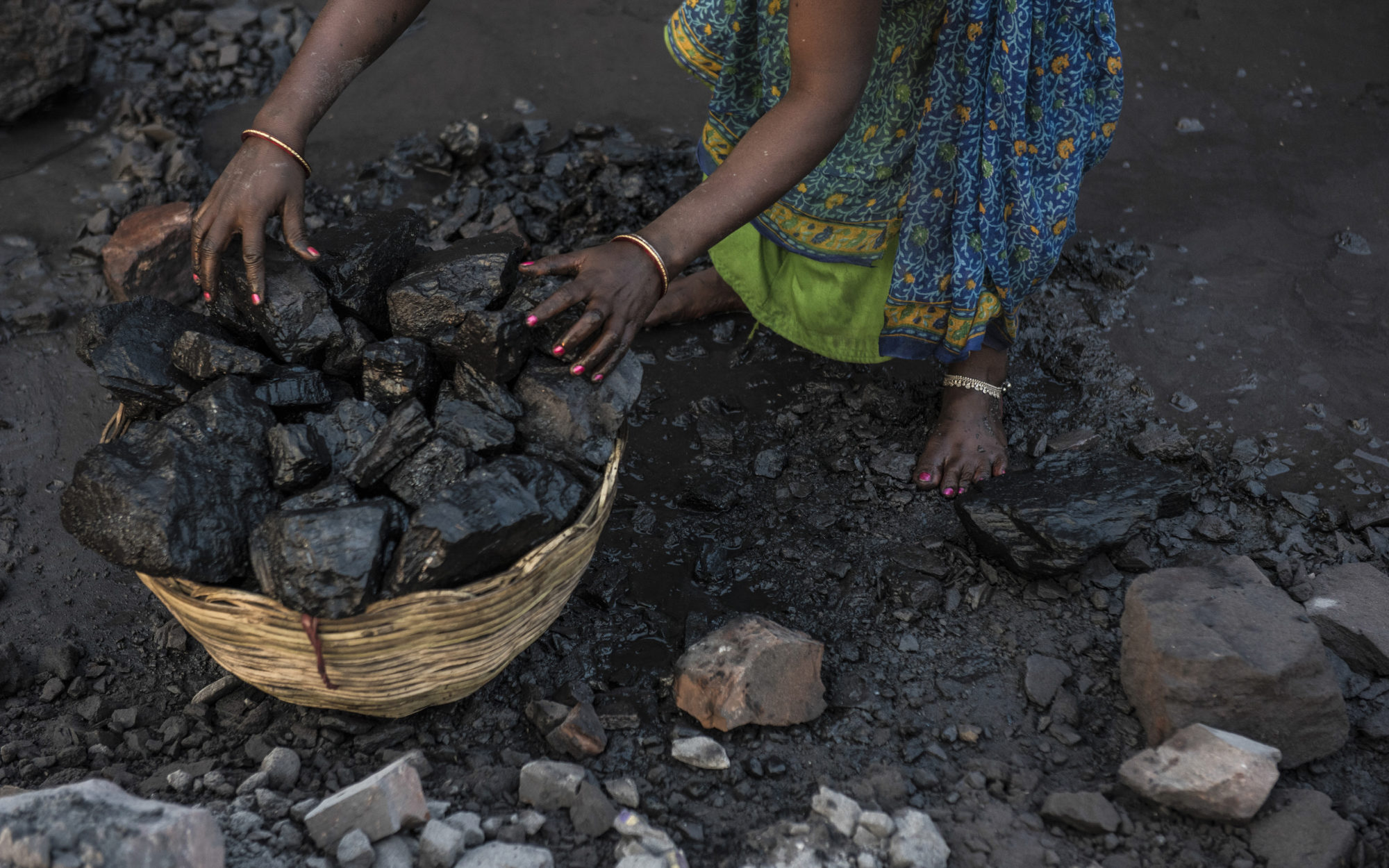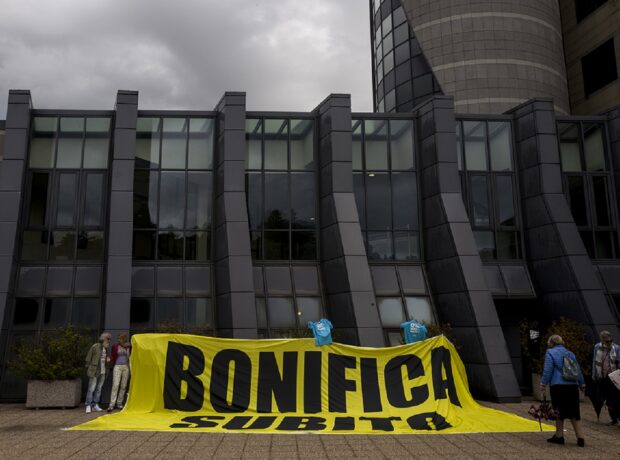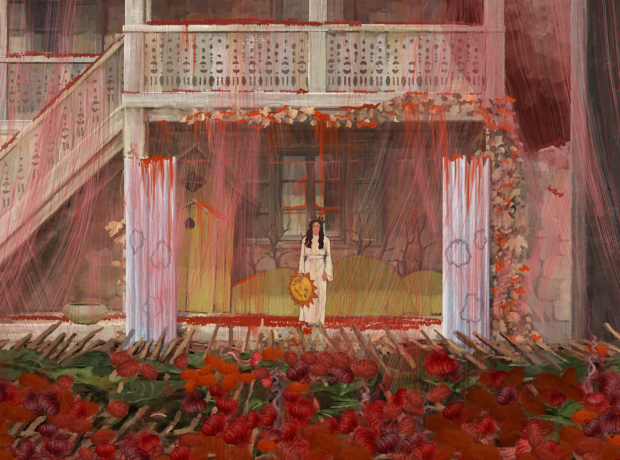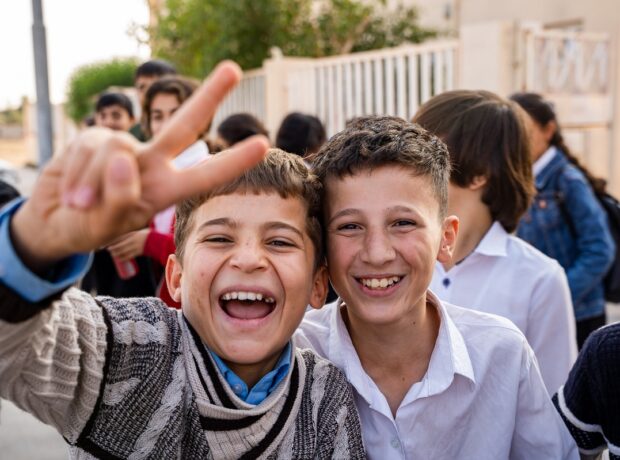In eastern India’s Jharkhand state, photojournalist Stefano Schirato brings these striking images from Jharia, the country’s largest coalfield, where fires rage beneath the ground and unregulated mining puts lives at risk.
India is currently the world’s third largest energy consumer, behind China and the US, (although its per person energy use is far lower on the world league table, with World Bank figures suggesting the average energy footprint in India is less than a third of that in China – which is still less than the average in the UK, which in turn is less than half that in the US).
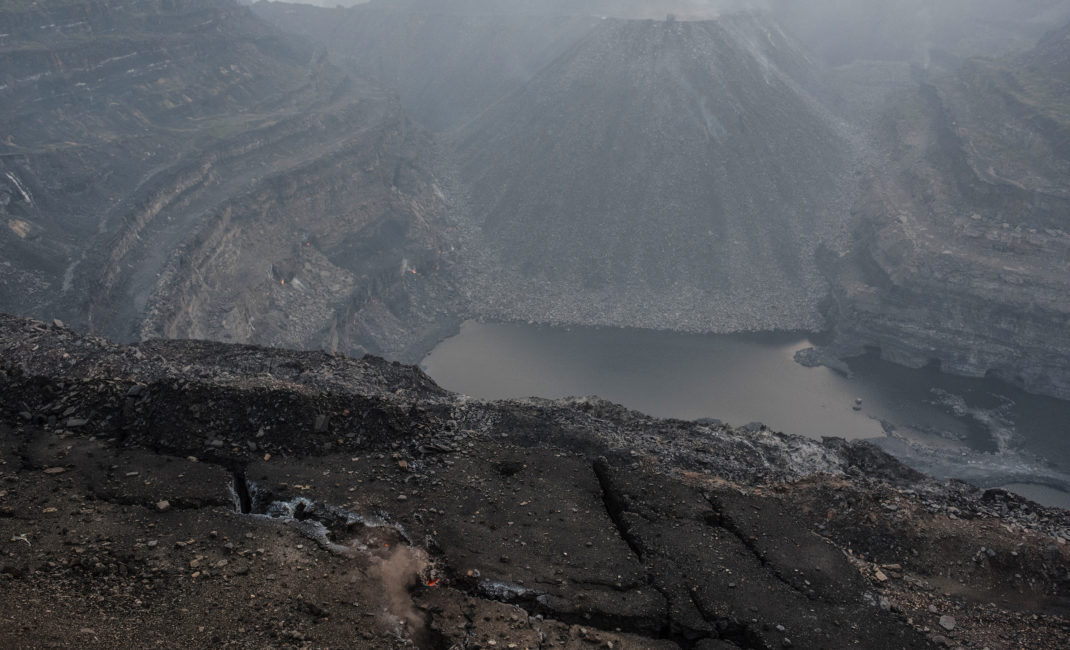
A coal mine in Jharia, in eastern India’s Jharkhand state
Somewhere between 55% and 70% of the country’s domestic energy needs are fuelled by coal, with a significant proportion of that coming from the Jharia coal mines in eastern India’s Jharkhand state.
Here in an area of 270km2, underground fires have been burning for more than a century beneath India’s largest coalfield, but in recent decades open-cast mining has brought the flames to the surface with devastating consequences for the local population.
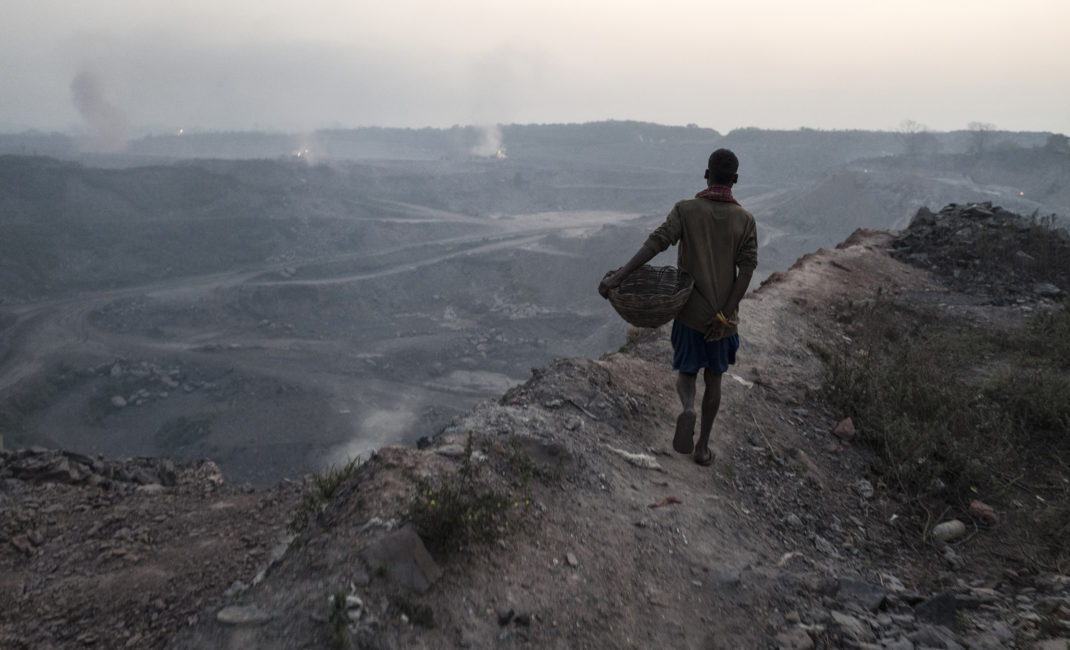
Underground fires coming to the surface in Jharia, India’s largest coalfield
In 1973 the newly nationalised Bharat Coking Coal Ltd (BCCL), a subsidiary of state-owned Coal India Ltd, started large-scale open cast mining as a more rapid and cost-effective method of extraction. But only up to a fifth of the people living in this area are employed by coal companies.
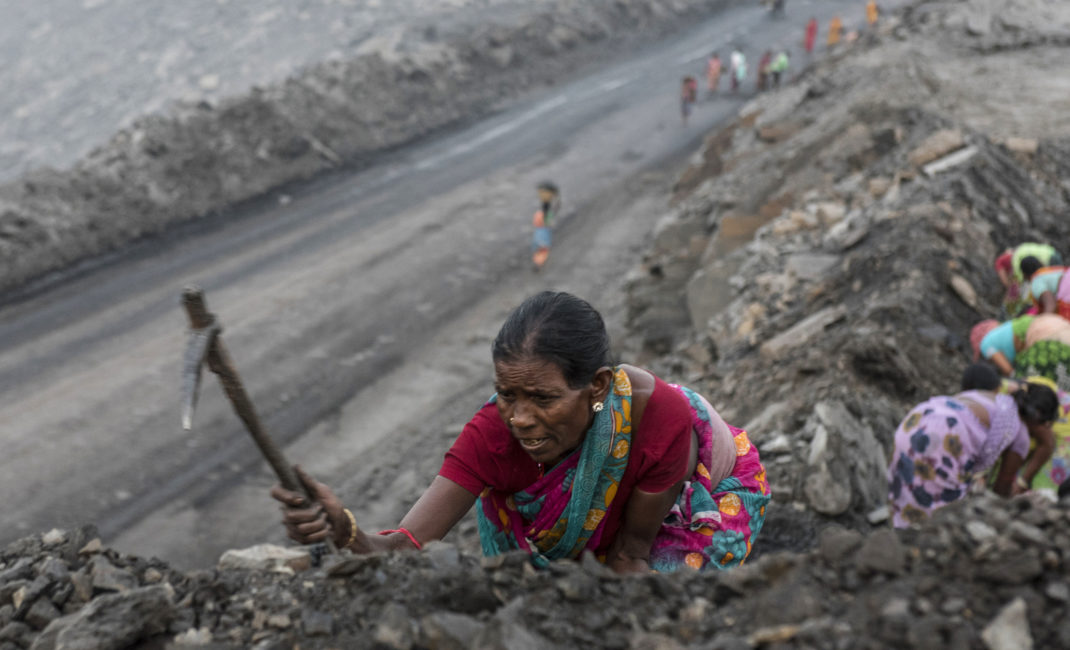
A woman illegally digs for coal in Jharia
As a consequence, alongside the official BCCL coal trade, an unregulated mining trade has boomed (which is illegal in India because mineral resources under the ground belong to the state).
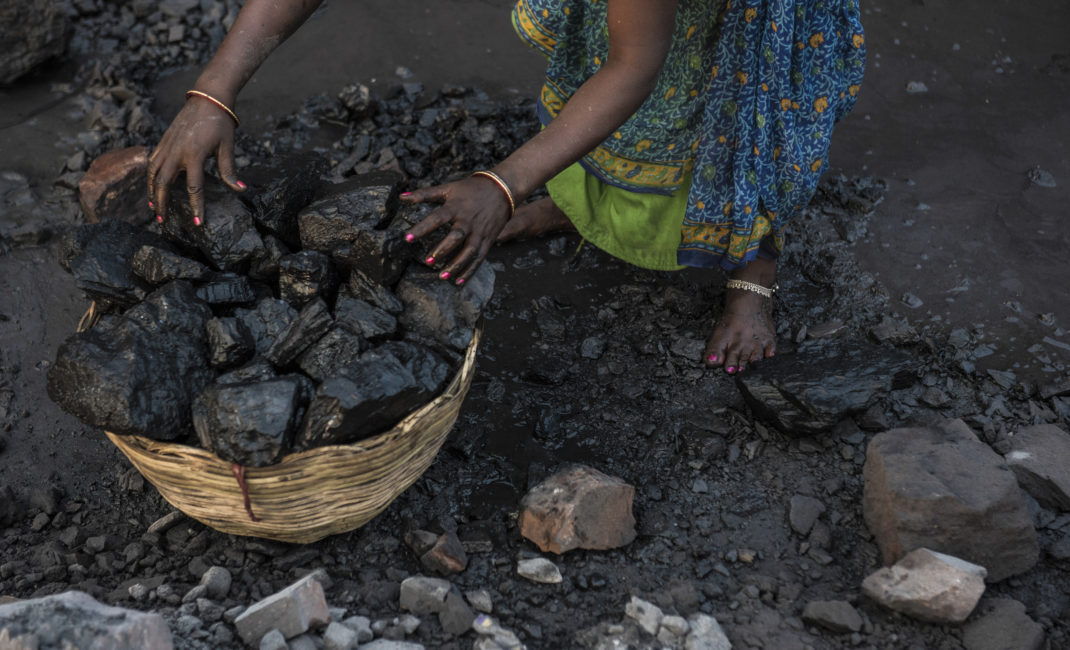
Pink nail varnish shines brightly against black coal where women mine with bare hands and feet
In the early morning, rows of women in brightly coloured traditional dress, with no protective gear, walk from their houses to the mines. They return after a few hours, carrying baskets full of coal on top of their heads.
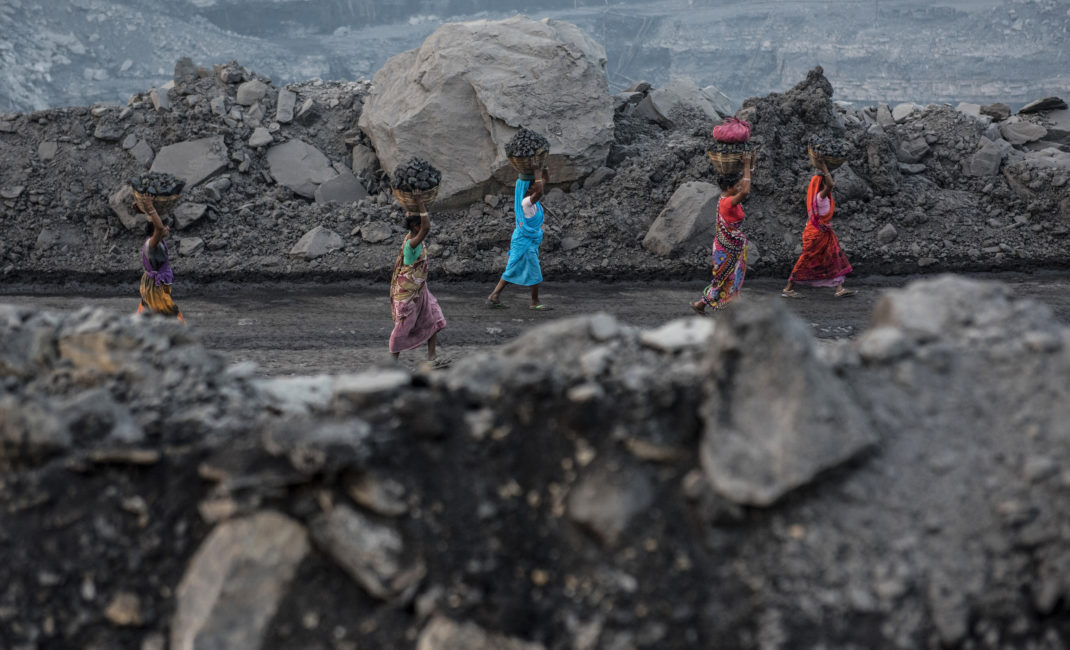
Women come back from the mine carrying baskets full of coal
A common sight along the highways and smaller roads are bicycles loaded with sacks of illegally gathered coal, pushed by “coal cycle-wallahs”. Each bike carries a quarter-ton of coal, with the wallahs sometimes pushing them further than 40 miles from the mines.
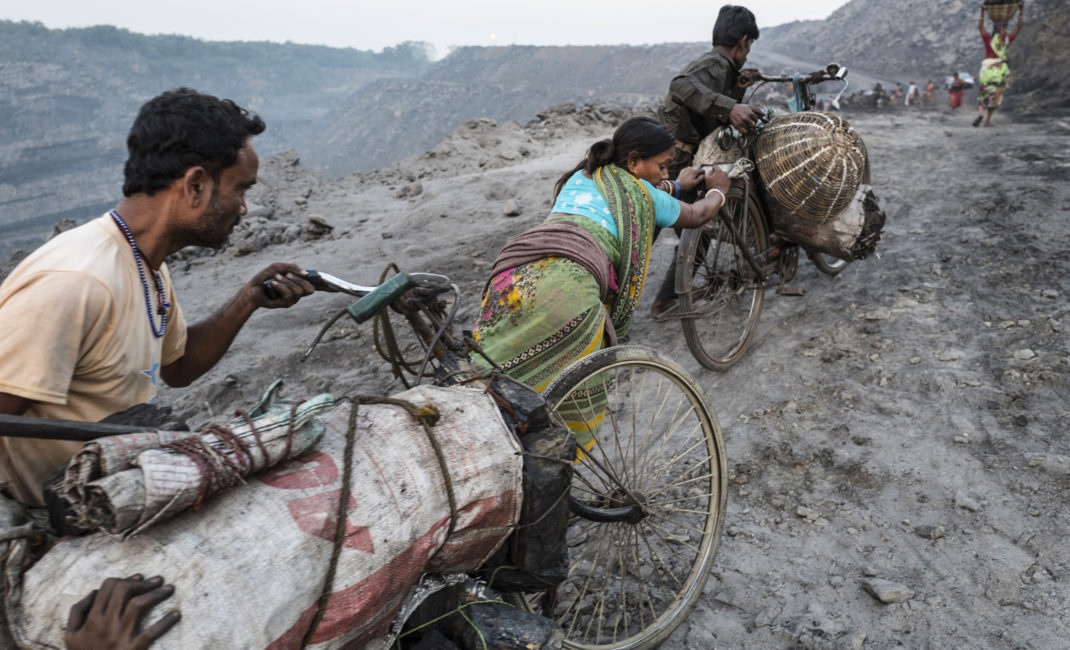
“Coal cycle-wallahs” push bicycles loaded with bags of coal along the road
Due to a century of underground mining, Jharia is now peppered with galleries and tunnels full of small pieces of coal that easily catch fire and make the ground unstable, causing subsistence and putting lives at risk.
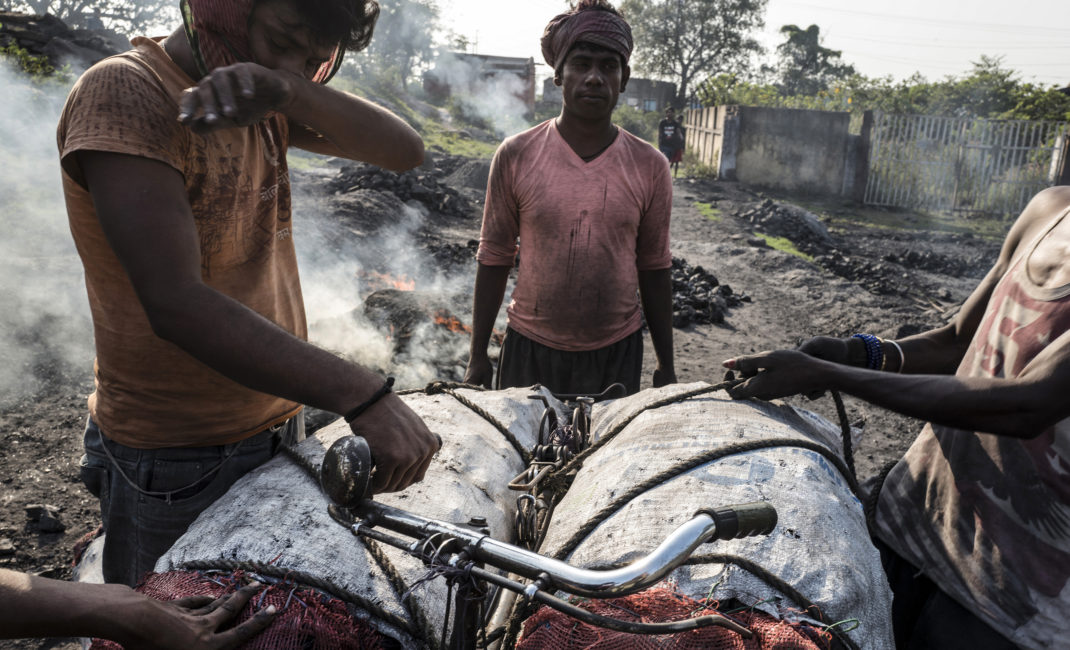
A scavenger’s bundled bags of coal ready for transport
Many of the homes here have cracked and crumbling walls caused by the fires below.
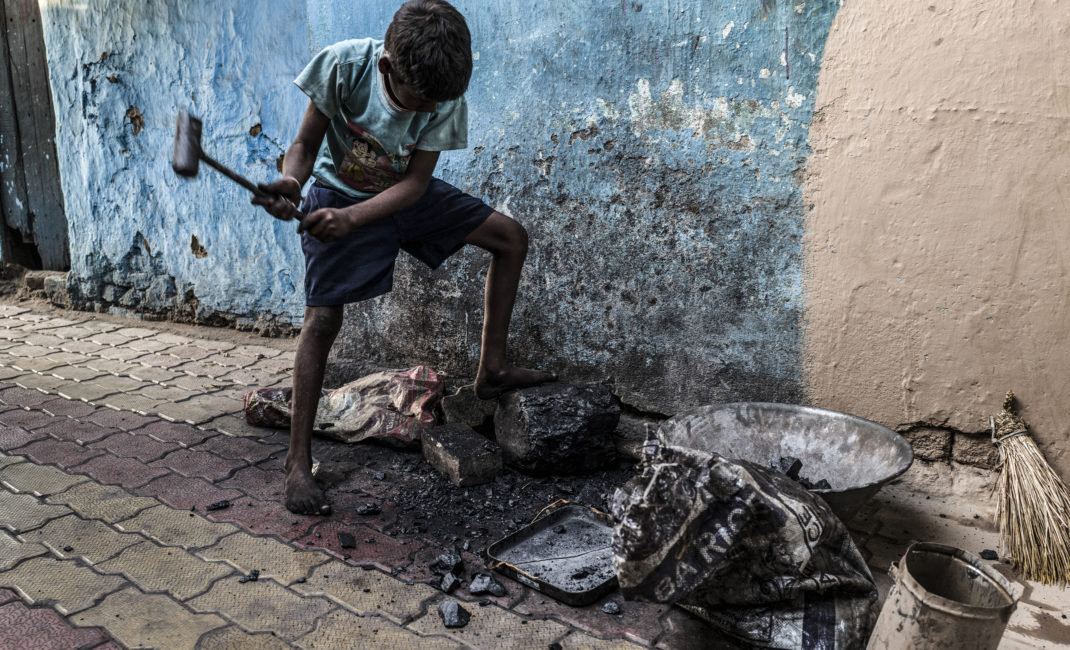
A young boy hammers a piece of coal to prepare a coal stove in Angarpathra
Thousands of people in Jharia are affected by serious diseases and respiratory problems such as tuberculosis, wheezing, asbestosis and lung disease. On average, the life expectancy of people living near the Jharia coalfields is reduced by at least a decade, said Om Prakash Agarwal, founder of Life Line Hospital in Jharia. The biggest culprit is airborne particulate matter, which is associated with the mining, storing and transporting of coal, says Biswajit Paul, associate professor at the Indian School of Mines, Dhanbad. According to Paul, high levels of both particulate matter PM10 and the finer and even more dangerous PM2.5 are found here in the coal belt. The average concentration of PM10 has been found to exceed India’s air quality standards by three to four times, he said. PM2.5 levels are also elevated, exceeding national standards by as much as 66%, a problem made worse by vehicle emissions and transporting uncovered coal. Oxides of sulfur, nitrogen and carbon released by coal fires further pollute the air.
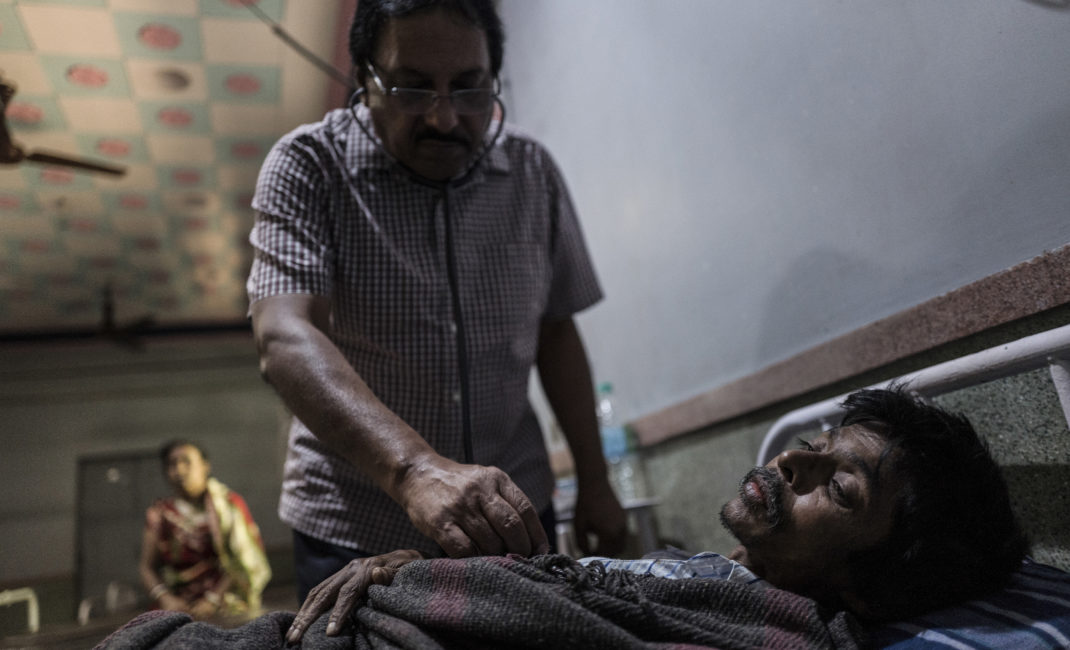
A man suffering from anthracosis is treated at Life Line Hospital, Jharia
Together, these pollutants result in chronic respiratory diseases like bronchitis and asthma. Their incidences are at least 35–40% higher in the coal belt than in other parts of India. Patients frequently arrive at this hospital with symptoms of pneumoconiosis — a disease caused by the accumulation of fine dust particles in the lungs. Coal miners in particular may develop anthracosis, also known as Black Lung Disease, resulting from deposits of minute coal dust in the lungs.
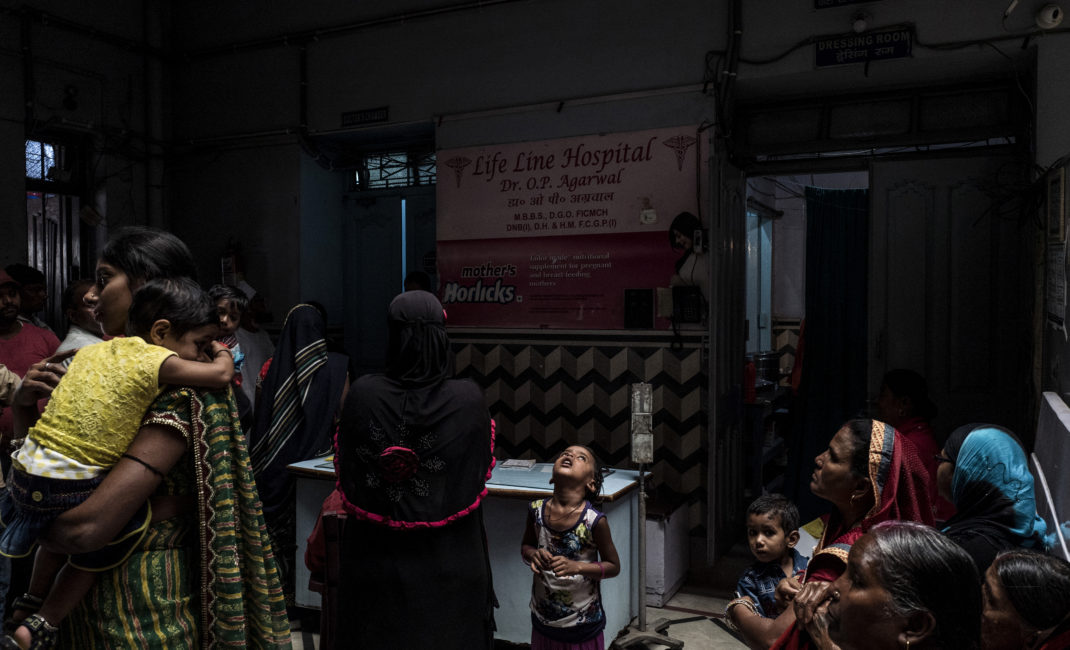
Patients in the waiting room of Life Line Hospital, Jharia
In recent years many local residents have been injured or killed in Jharia. People have been burned alive after being sucked into flaming sinkholes in the ground.
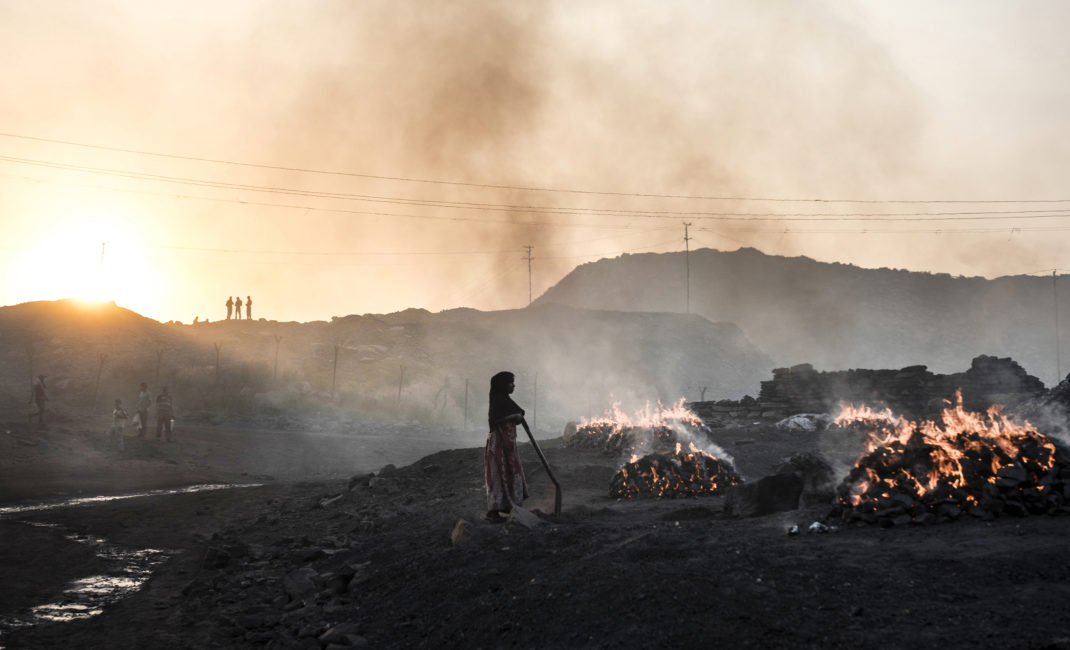
A girl stands among fires in Kusunda village
In 2006 the Indian government began a bid to resettle residents by buying land on the margins of the coal mines, offering landowners fair compensation and employment. The affected area includes many villages, such as Belgaria. Once based on an agricultural economy, the village has been transformed over the years into Belgaria township, where working class people from Jharia have been relocated.
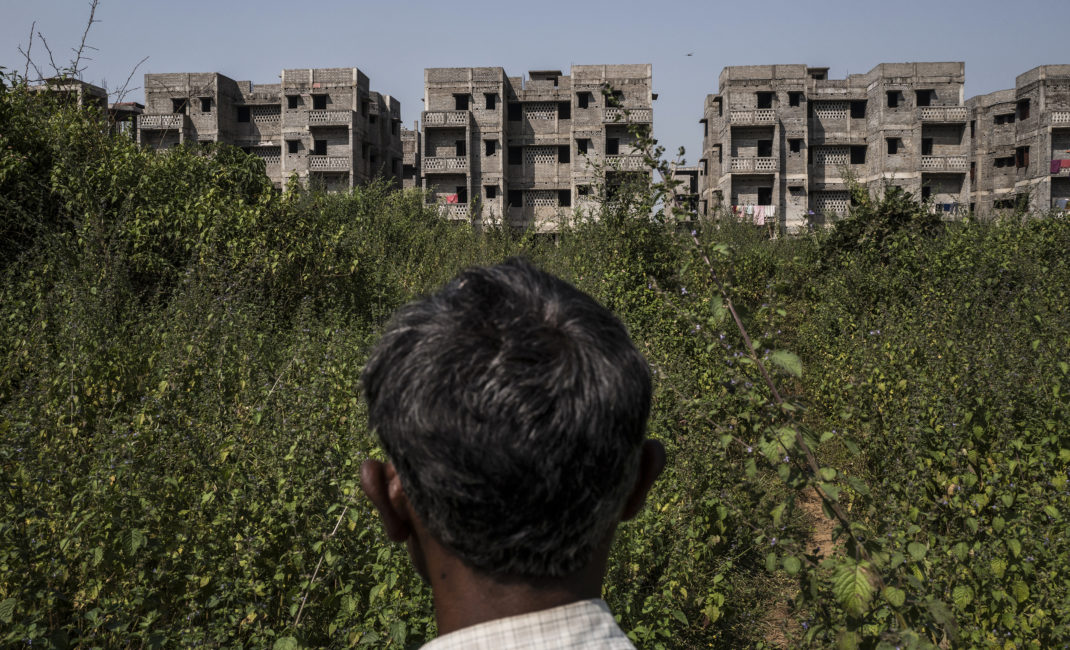
A man stands in front of a housing complex in Belgaria, where Jharia’s working class has been relocated
The lives of Belgaria’s inhabitants have been dramatically changed since the land grabbing. Despite government promises, compensation was given only to landowners and the policy was doubly discriminatory against small landowners, tenants and landless agricultural workers. No alternative work was offered to anyone who lost less than two acres of land.
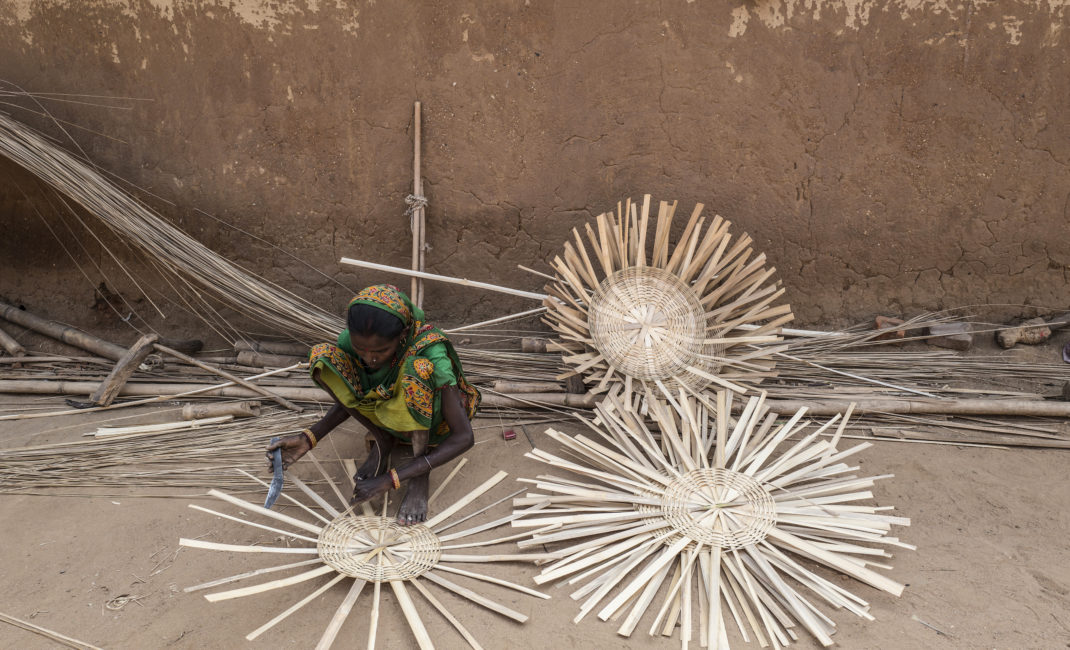
A local woman makes bamboo baskets to sell to the market
People who have been resettled say their current living conditions are even worse than before. Many of them are living with inadequate housing and with no access to employment opportunities.
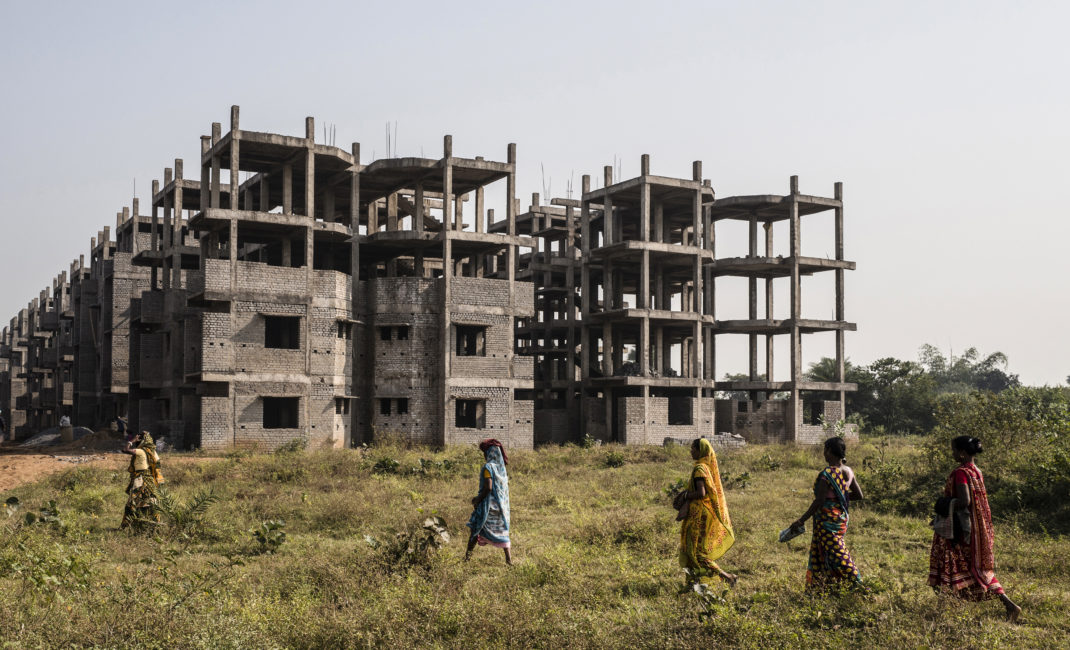
The goverment has forced inhabitants of rural areas to relocate to Belgaria
They have been moved from their former houses to one or two-room flats in Belgaria with inadequate amenities: a poor sewage system; ramshackle houses, and no toilet. Because Belgaria is so far away from Jharia, most of the villagers have been forced to quit their jobs, while those still working in the coal mines face a long daily commute, forcing many to reduce their work hours.
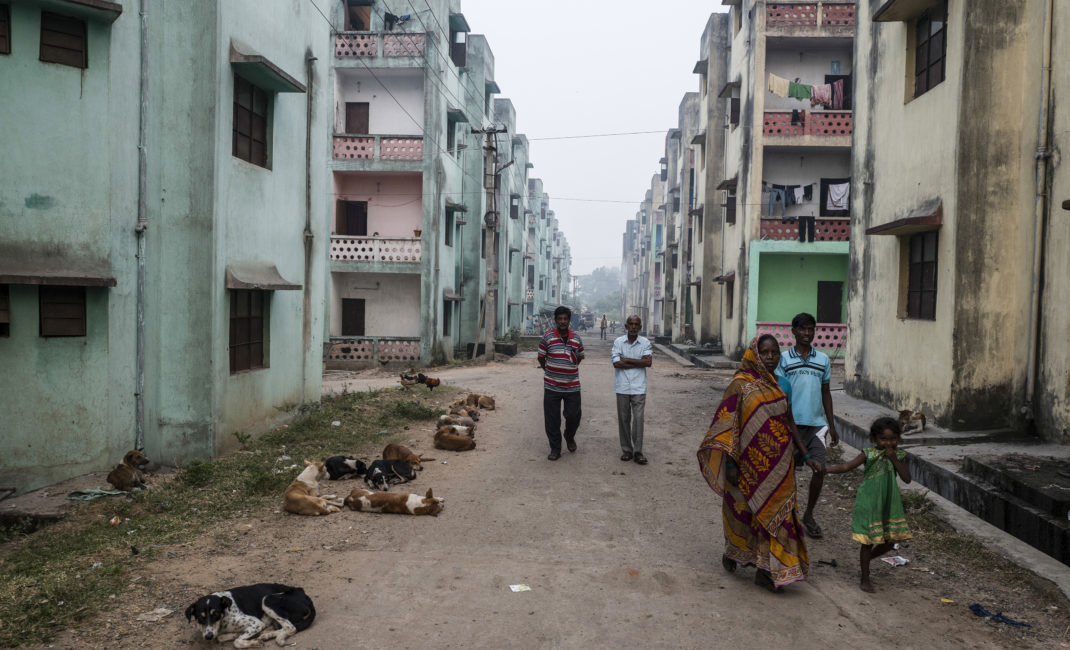
Street scenes in Belgaria, one of the townships built for the people who have lost their homes in Jharia
